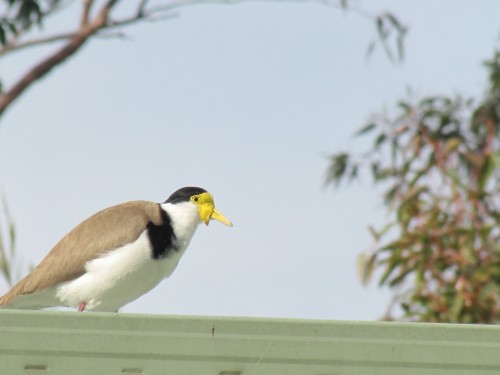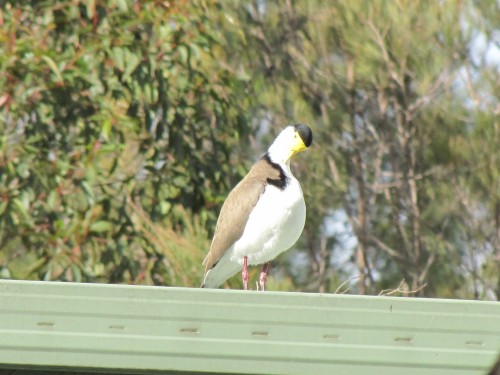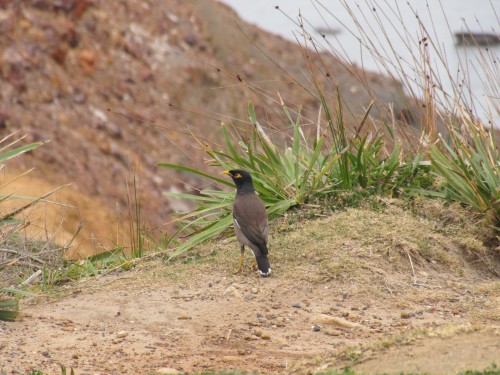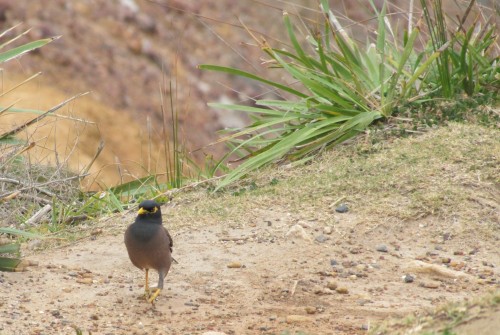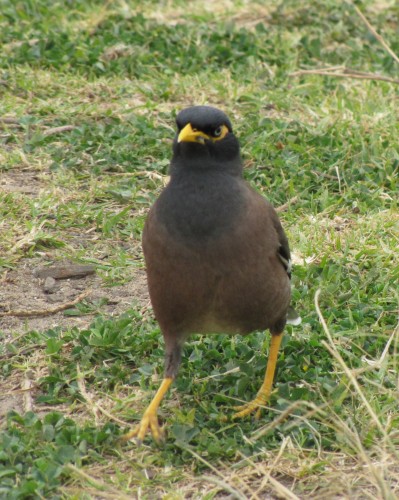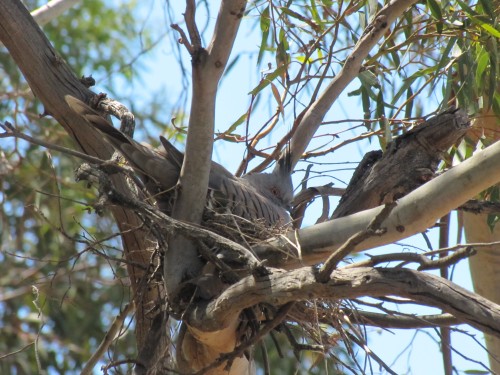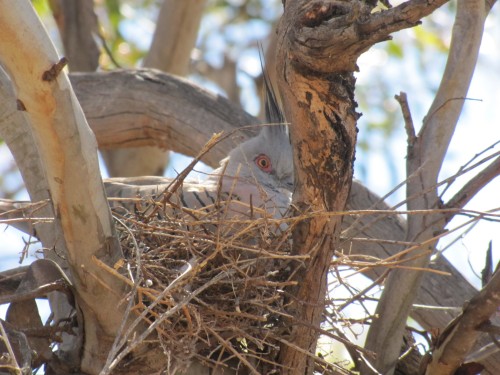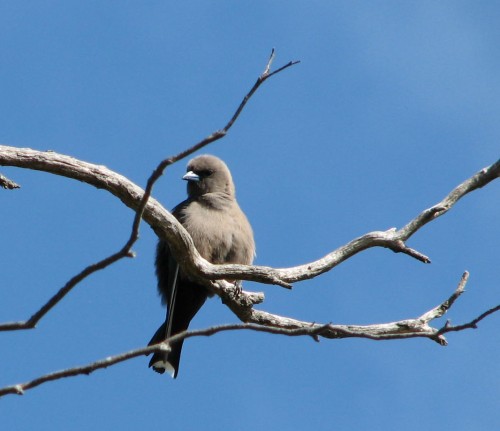More Superb Fairy-wrens
Most mornings we have breakfast in our sun room overlooking our garden and several bird baths all within five metres of where we sit. Quite a few of the photos I have shared here over the years were taken from that very spot. After breakfast I usually read the daily paper and attempt the various puzzles as time and patience allow.
Yesterday I looked up from my paper to see our little family of Superb Fairy-wrens coming in for a drink and a short splash in the water. As I watched I did a quick count – and then an excited double check. We now have five wrens in our garden. They have either been joined by another, or have been successful in breeding this summer. One of them was begging from the coloured male, so I lean towards a happy nesting event recently.
This little troupe of birds has grown steadily in numbers over the last three years. I had recorded this species in our garden over twenty years ago and then they disappeared until three years ago. I suspect the many feral cats in the district are to blame.
On our arrival home after an overseas trip in the middle of January three years ago we were delighted that a coloured male and a female had taken up residence in our absence. Several family groups have always been present up the hill from home in some bushland about a kilometre away.
For some months we saw just the two of them. Later that year we saw three together on many occasions, and the next year there were four – and now we see five together. We are delighted to see and hear them in our garden on most days and pleased that they consider our garden a suitable habitat in which to reside and breed.
I am not showing any new photos today because I didn’t take any on this occasion. Instead, I have listed below some links to previous articles with photos of wrens for you to look at.
Further reading:
- Great birding moments #35 – Superb Fairy-wren
- Great birding moments #34
- Wrens at the birdbath
- Our wrens are back
- Beautiful Superb Fairy-wren
- Great birding moments #21 Splendid Wren
A high rise bird apartment
From time to time I see some amazing, interesting or even bizarre things where birds are concerned. At first glance, today’s photos could fall into that category. Masked Lapwings (plovers) are usually found on grassy areas – lawns, ovals and roadside verges. What is this one doing on the roof of the Australian Reptile Park (near Sydney)?
Oddly enough, this is quite common behaviour with this species. In fact, they often prefer to nest up on the roof of a house, shed, office or factory in some situations. How the little hatchlings survive the drop onto the ground amazes me; they must be quite tough little balls of fluff. Perhaps all that downy fluff helps them to bounce like a tennis ball.
When you think about it, nesting on a roof is a better survival strategy than nesting on the ground like they usually do. Not only does this help minimise the threat from cats and dogs, it generally does away with interfering people and their mowers.
In this case however, it is the one safe place to nest away from the hundreds of visitors to the park every day – that’s a lot of shoes tramping around on every available bit of grass. Eggs don’t take kindly to stomping feet.
This is not a minor threat
Yesterday I wrote about a pleasant time my wife and I had visiting Long Reef Point north-east of Sydney CBD. One small, disturbing element of our visit was the number of Common Myna birds in the locality. This introduced pest species is quite a threat to our native bird species, competing directly with them for nesting sites and food. Many people are also annoyed by their strident calls.
The particular individual shown in today’s sequence of photos seems to have taken a dislike to me – or my camera – and appears to be advancing towards me in a threatening way. I am pleased that it caused me no harm and left my camera intact.
Crested Pigeons nesting in our garden
On our return from a recent holiday in Sydney we were having lunch on the back veranda. I was watching a Crested Pigeon fussing about in a tree about twenty metres away. Next thing it settled down as if on a nest. I left my food – actually I think I was at the cuppa stage of the meal – and moved slowly and carefully towards the nest. I’d remembered to go inside to get my camera first.
Sure enough – the pigeon was sitting on a nest. Crested Pigeons are very common around Murray Bridge. At times I have counted up to 50 sitting perched on power lines, often in a row. It’s quite a spectacular sight, though it is not common to see so many at one location. Loose groups of 5 to 15 are quite common, however.
Crested Pigeons are what I call a resident breeding species, meaning, they are resident all the year and that they breed in our garden. The nest shown in today’s photos is quite a substantial nest for a pigeon. Most pigeons and doves are not fastidious or elaborate when it comes to nest building. They seem to think that a dozen or so flimsy sticks placed at random in the fork of any tree or bush will do as a home for their chicks. How the eggs don’t fall through some nests I’ve seen is amazing. Still, they seem to manage; there are a lot of them around!
My writing of this post was interrupted by the load of washing finishing, and I am the one in our household who usually does the washing. The pigeon’s nest is near the clothes line and the bird is sitting tight, even when we walk within a few metres of the nest. She must have eggs, I think. I will keep a watch on proceedings.
UPDATE: January 22nd: over the last week we have had a heatwave with five days over 42C with several over 45C (113F). This was followed by several days of wild wind which broke several branches off our trees. The nest is still there but appears to have been abandoned.
Early morning birding walk
I went for an early morning walk today. It was an enforced walk: I had just taken our car to local garage for a regular service and check up. I could have asked my wife to pick me up in her car but she was still in bed. Despite the early hour, the air was already quite warm and I could understand why most of South Australia has had fire bans issued for the day. Our first burst of hot weather for the summer promises to be a good one. Time to hunker down and do some indoor things. Like reading. Or writing this post.
On my morning walk I was aware of the vast amount of activity on the part of the birds. My walk took exactly 28 minutes to complete and I saw or heard most of the locally resident species along the way, including large numbers of Galahs. The highlight of the walk was two Dusky Woodswallows perched on the fence of a nearby neighbour’s property.
While this species is a regular visitor to our little piece of Australia (5 acres), I can’t call it a resident species. This “pair” of birds – I use the term cautiously – have been sighted on a few occasions in the same spot over the last few weeks. I suspect that they are actually a pair and have a nest nearby. Quite a few years ago a pair nested in one of the trees in our front scrub near our house.
Of course, I didn’t have my camera with me this morning, and my phone camera doesn’t have a zoom sufficient for the job, so I have posted below a photo taken some time ago. This was taken in our scrub near the house.
